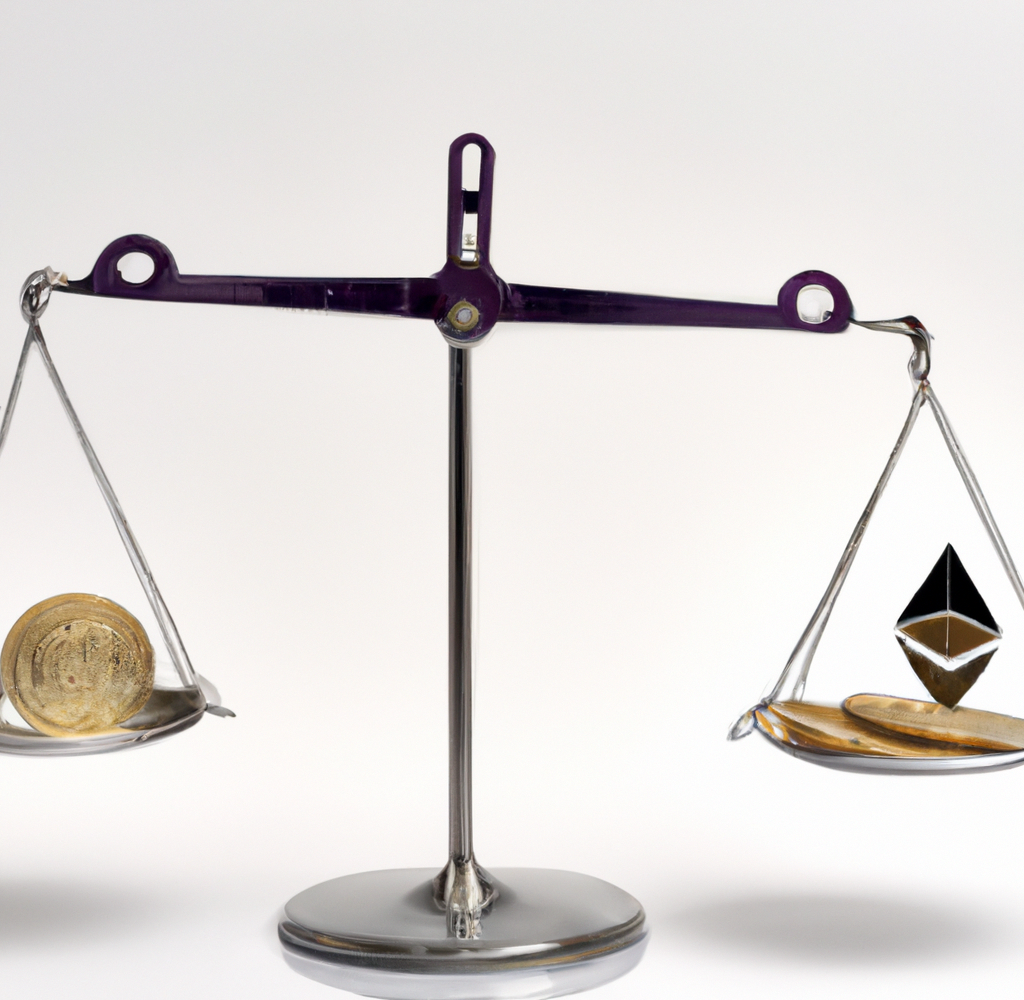In recent years, the cryptocurrency market has experienced a revolution with the emergence of decentralized finance (DeFi) platforms. Yield farming and staking have become popular investment strategies, offering investors the opportunity to earn passive income through their digital assets. However, as with any investment, these strategies come with their own set of risks and rewards. In this article, we will delve into the details of yield farming and staking, discussing their benefits and potential pitfalls.
1. Yield Farming: The New Frontier in DeFi
1.1 The Basics of Yield Farming
Yield farming, also known as liquidity mining, is the process of earning returns on cryptocurrency holdings by lending them to DeFi platforms. Users provide liquidity to decentralized exchanges (DEXes) or lending platforms and earn interest or tokens as a reward.
1.2 High Returns, High Risks
Yield farming can be lucrative, with some platforms offering annual percentage yields (APYs) of up to several hundred percent. However, these high returns come with significant risks. Yield farmers face various challenges, such as impermanent loss, platform vulnerabilities, and token depreciation.
1.2.1 Impermanent Loss
Impermanent loss occurs when the value of the tokens supplied to a liquidity pool fluctuates, resulting in a potential loss when compared to simply holding the tokens. This risk arises due to the constant need for rebalancing within the pool to maintain a fixed ratio between the supplied assets.
1.2.2 Platform Vulnerabilities
Smart contracts, the backbone of DeFi platforms, are susceptible to vulnerabilities and attacks. In 2020, DeFi platforms suffered losses exceeding $100 million due to various exploits, such as flash loan attacks and reentrancy attacks.
1.2.3 Token Depreciation
Yield farming often involves earning platform-specific tokens as rewards. These tokens can experience significant price fluctuations, and any depreciation in value can erode the gains made through farming.
2. Staking: Locking up Crypto for Rewards
2.1 The Fundamentals of Staking
Staking is the process of participating in the proof-of-stake (PoS) consensus mechanism by locking up a specific amount of cryptocurrency in a wallet to support a blockchain network. In return, users earn staking rewards, typically in the form of additional tokens.
2.2 The Appeal of Staking
Staking offers a more predictable and stable return on investment compared to yield farming. Many established projects, such as Ethereum 2.0 and Cardano, utilize the PoS mechanism, attracting investors with their lower risk profiles.
2.3 Risks Associated with Staking
Although staking is generally considered a safer investment strategy than yield farming, it still carries its own set of risks, including illiquidity, slashing penalties, and reliance on third-party validators.
2.3.1 Illiquidity
When staking, users’ tokens are locked up for a predetermined period. This lack of liquidity can be problematic if the investor needs to access their funds quickly or if the market experiences significant volatility during the lock-up period.
2.3.2 Slashing Penalties
In some PoS networks, validators can be penalized for malicious behavior or failing to stay online consistently. These penalties, known as slashing, can lead to a loss of staked tokens for both validators and delegators.
2.3.3 Third-Party Validators
Many investors delegate their tokens to third-party validators, as running a validator node can be technically challenging. However, this reliance on external entities introduces counterparty risk, as investors depend on the validator’s performance and trustworthiness.
3. Weighing the Risks and Rewards
While yield farming and staking both offer attractive passive income opportunities, investors must carefully consider the inherent risks associated with each strategy. Due diligence, proper risk management, and diversification are crucial in navigating the complex and ever-evolving world of DeFi.
3.1 Due Diligence
Investors should thoroughly research the DeFi platforms and projects they plan to engage with, paying close attention to factors such as tokenomics, team credibility, platform security, and community engagement.
3.2 Risk Management
Understanding and managing risk is essential in the world of DeFi. Investors should be prepared for market fluctuations and potential losses by setting stop-loss orders, maintaining a well-diversified portfolio, and avoiding over-leveraging their positions.
[Source: Forbes – https://www.forbes.com/advisor/investing/defi-decentralized-finance/]
3.3 Diversification
To mitigate risks associated with yield farming and staking, investors should consider diversifying their investments across various platforms, projects, and assets. This approach can help to spread risk and maximize potential returns.
Conclusion
Yield farming and staking have opened up new avenues for investors seeking passive income opportunities in the crypto market. However, the risks associated with these strategies must not be overlooked. By conducting thorough research, practicing effective risk management, and maintaining a diverse portfolio, investors can better position themselves to reap the potential rewards of the DeFi revolution.
FAQs
Yield farming, or “liquidity mining,” is a strategy where you lock up your crypto assets to earn rewards. Think of it as putting your crypto to work!
While yield farming involves providing liquidity for returns, staking is about holding and locking up a specific crypto to support a network’s operation, like validating transactions. It’s more passive and generally safer.
Some have made killer gains, no doubt! But it’s super volatile and risky. Always remember: high reward, high risk. It’s not a get-rich-quick scheme.
Dive into a DeFi platform, choose a liquidity pool, and get those assets farming! But DYOR (Do Your Own Research) first, okay?
Ah, the sneaky side of liquidity pools! If the value of your staked tokens fluctuates, you might end up with less than if you’d just held them. It’s a complex beast – dig deeper into it.
Well, “safe” in crypto is relative. Some stablecoin pools might have less volatility, but remember: there’s always risk in the crypto world.
Depends on the token and the market mood. Staking can offer consistent returns, while yield farming can be a wild ride. Balance out and diversify, mate!
Oh, the dark side! It’s when shady developers drain a project of its funds, leaving investors high and dry. Always be cautious of too-good-to-be-true returns.
If you’re frequently moving assets around, especially on congested networks like Ethereum, gas fees can eat into your gains. Be gas-wise!
APY, or Annual Percentage Yield, is a start, but not the whole story. High APYs can be enticing but remember the risks and potential for impermanent loss.
Those big fish with massive amounts of crypto! They can influence market trends. Always good to keep an eye on whale movements.
Dive in but with caution! And always remember the golden rule: never invest more than you can afford to lose. Happy farming and staking!



